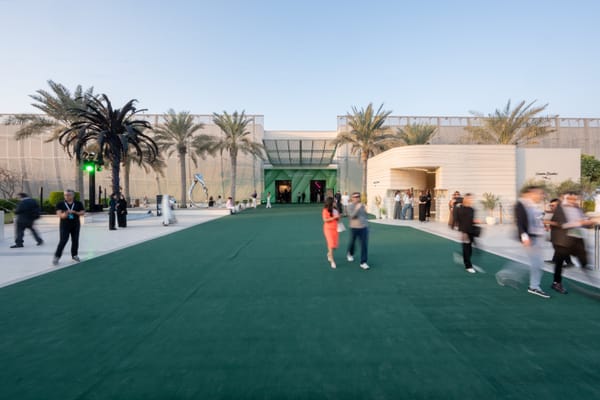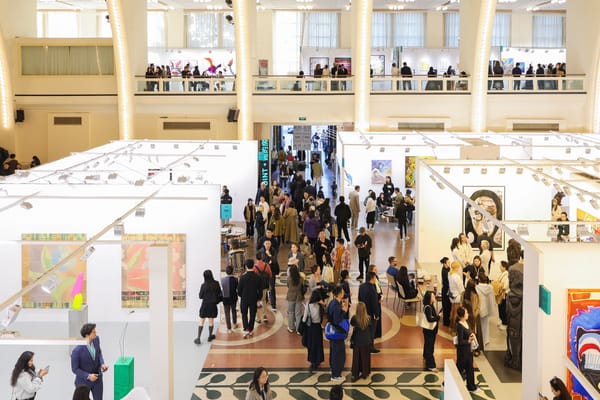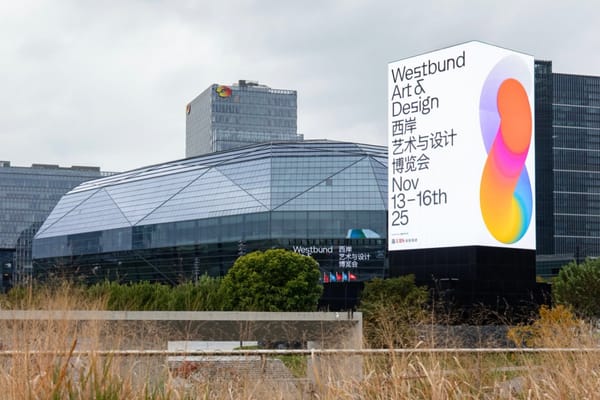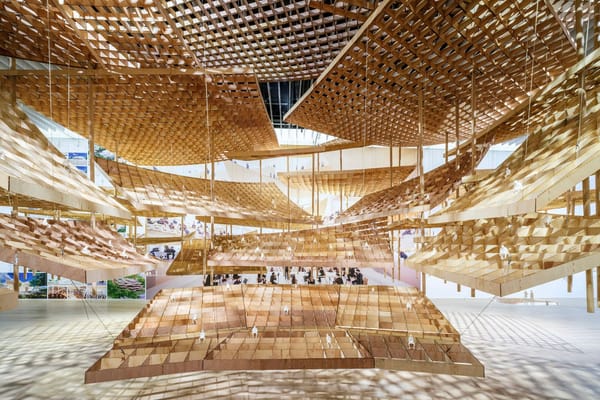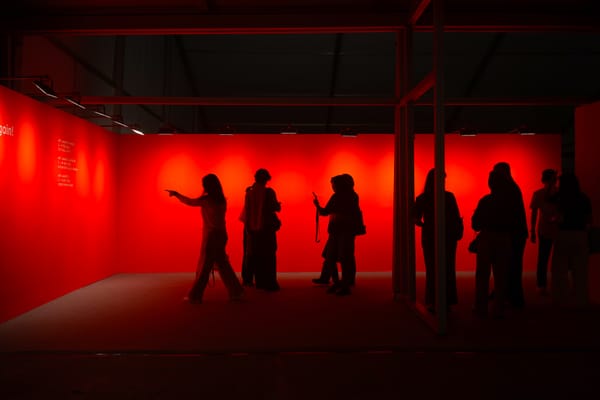Market
Critic’s Picks from Armory 2025: Five Asian Artists, Five Self-Portraits
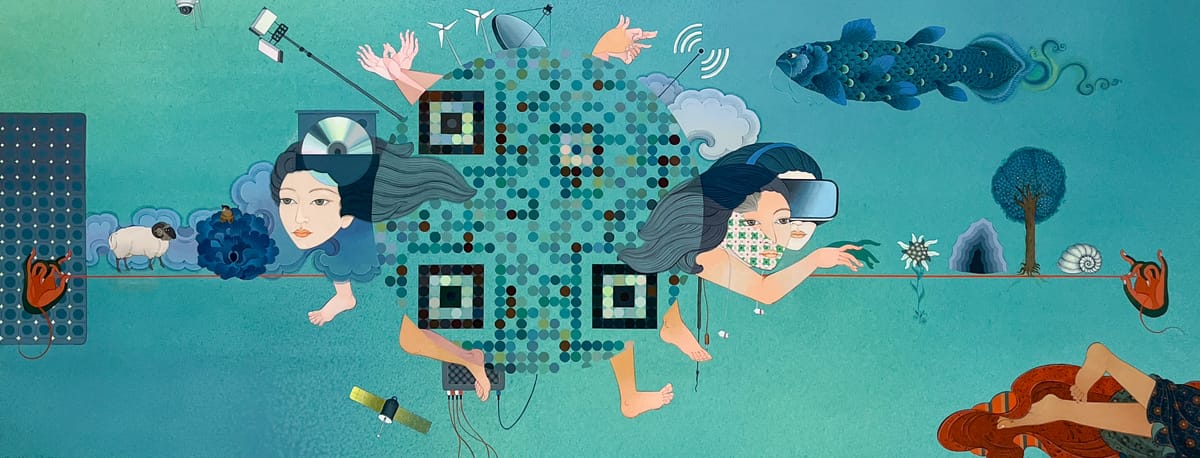
Amid an economic downturn and a wave of gallery closures, the 2025 Armory Show—its first under director Kyla McMillan—opened at New York’s Javits Center with unexpected optimism. The fair gathered more than 230 exhibitors from 35 countries and drew upward of 50,000 visitors, reaffirming its status as a key marker of the fall season.
Walking the aisles, what struck me most was how the strongest works read as self-portraits. As an art critic, I tend to look at self-portraiture broadly—not just likeness but the ways artists inscribe their own identities, questions, and vulnerabilities into their practice. It is not a theme traditionally emphasized in much of Asian art, where collective histories and inherited forms have often taken precedence. Yet here, five Asian artists place themselves—literally or metaphorically—at the center of their work, turning identity into both subject and method.
Uuriintuya Dagvasambuu, Sapar Contemporary
Mongolian artist Uuriintuya Dagvasambuu (b. 1979) is a leading practitioner of Mongol Zurag, a style of painting that emerged in the early 20th century fusing secular, nationalist themes with Buddhist and folk motifs. Executed in mineral pigment on cotton, much like Tibetan thangka, Mongol Zurag traditionally features finely rendered figures and intricate decorative borders.
At New York-based Sapar Contemporary’s booth, Dagvasambuu’s works portray scenes of everyday life and women’s roles in post-nomadic Mongolia. Figures wearing virtual reality glasses, flying kites, and listening to music are set within ornate frames that hint at cosmic forces and spiritual cosmology. Her style also reflects the Buddhist doctrine that “everyone can be a Buddha in life,” infusing her self-portrait figures with playfulness and empathy.
By expanding Zurag into a visual language for the 21st century, Dagvasambuu juxtaposes intimate domesticity with universal spiritual questions. Her works have gained recognition at international biennials and institutions, including the Dallas Museum of Art and the Hood Museum at Dartmouth. At the Armory Show, her presentation stood out as a quiet yet powerful reminder that indigenous traditions are not relics, but living practices evolving within a global contemporary art discourse.
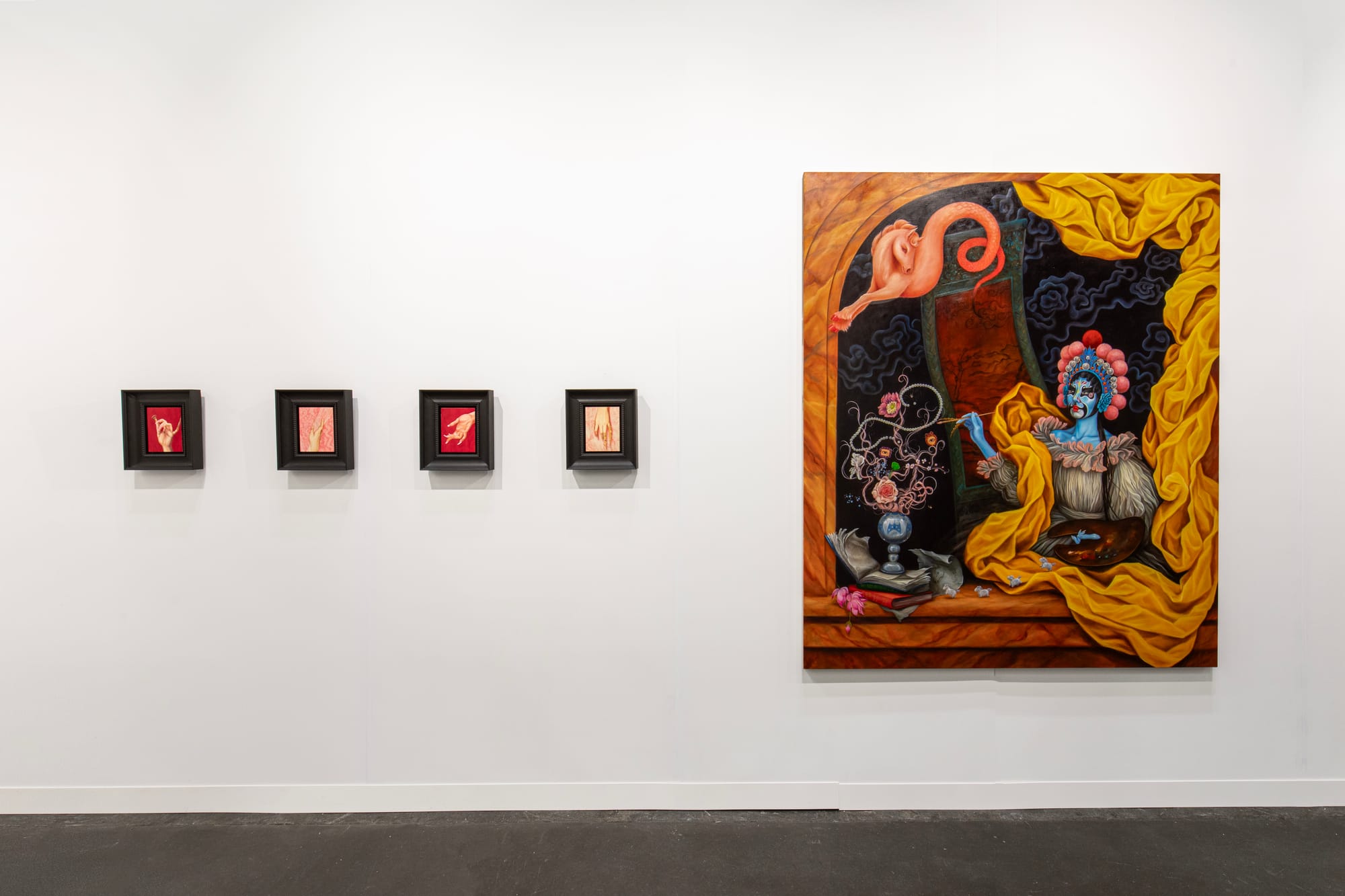
Xu Yang, Gallery Rosenfeld
At Gallery Rosenfeld’s booth, London-based Chinese artist Xu Yang (b. 1996) presented paintings that fuse Rococo extravagance with queer self-representation. Xu uses her queer identity as both subject and strategy, probing how femininity is shaped as a social construct. Draped in satiny folds and pastel swirls reminiscent of cake icing, her canvases turn inherited traditions into dreamlike stages of feminine and queer agency—spaces where she frequently casts her own body as the protagonist.
In Tales and Dreams Are the Shadow Truths That Will Endure When Mere Facts Are Dust and Ashes (2025), Xu situates herself within a theatrical tableau inspired by Rachel Ruysch and Michiel van Musscher’s 1692 collaboration, depicting the artist surrounded by her creations. Here, she appears amid the objects, ideas, and experiences that sustain her practice: a vase unfurling flowers into baroque spirals, open books, mythical creatures, and her own masked visage drawn from Chinese Beijing opera. By intertwining European ornament with operatic symbolism, the work celebrates the pleasures of invention while asserting identity as a space where desire takes center stage, transforming inspiration into a form of self-portraiture.
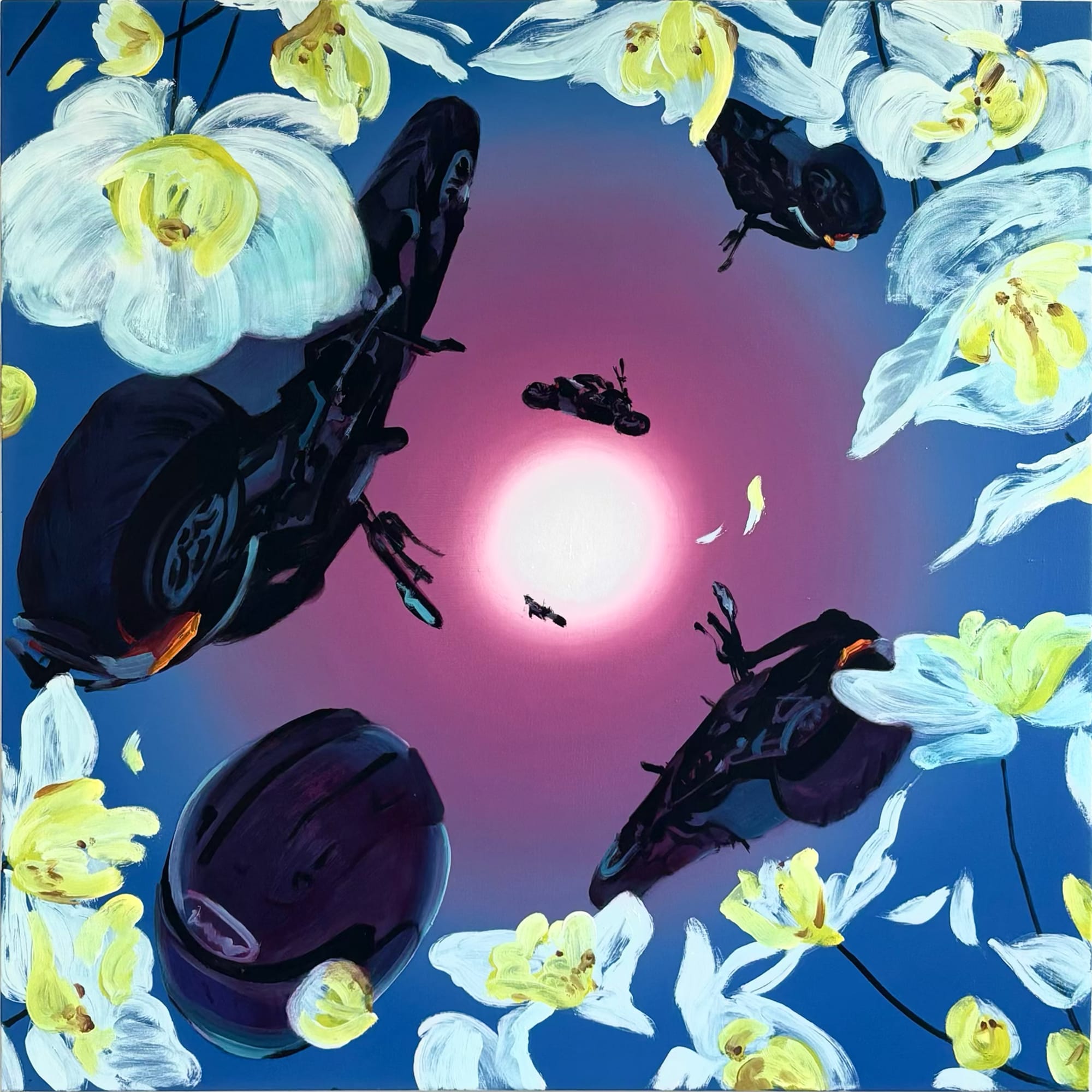
Yifan Jiang, Alisan Fine Arts
Canadian Chinese artist Yifan Jiang (b. 1994), now based in New York, works at the intersection of painting, animation, and performance. Represented at the fair by Alisan Fine Arts, her canvases blur scientific rationality with psychological and magical thinking. A conceptually driven, project-based artist, Jiang often begins by visualizing a scene drawn from everyday events, travel experiences, or fragments of literature. She then builds a digital model using 3D software, exploring the scene from multiple vantage points before allowing the materiality of paint to negotiate with the image. This process lets her slip between the technological and the tactile, giving her paintings their uncanny balance of precision and dream.
Works like Orchids and Drift (both 2025) expand fleeting, mundane gestures into cosmic allegories. Orchids, for instance, recalls the sensation of lying in the grass after a long bike ride, when the sky feels within reach—a moment at once ordinary and infinite.
A former Core Residency fellow at the Museum of Fine Arts, Houston, Jiang has exhibited widely, from the Today Art Museum in Beijing to Asia Society Texas. Her irreverent approach to epistemology—rendering the banal uncanny, and the uncanny oddly intimate—made her booth at the Armory Show a meditation on how knowledge itself might be re-enchanted.
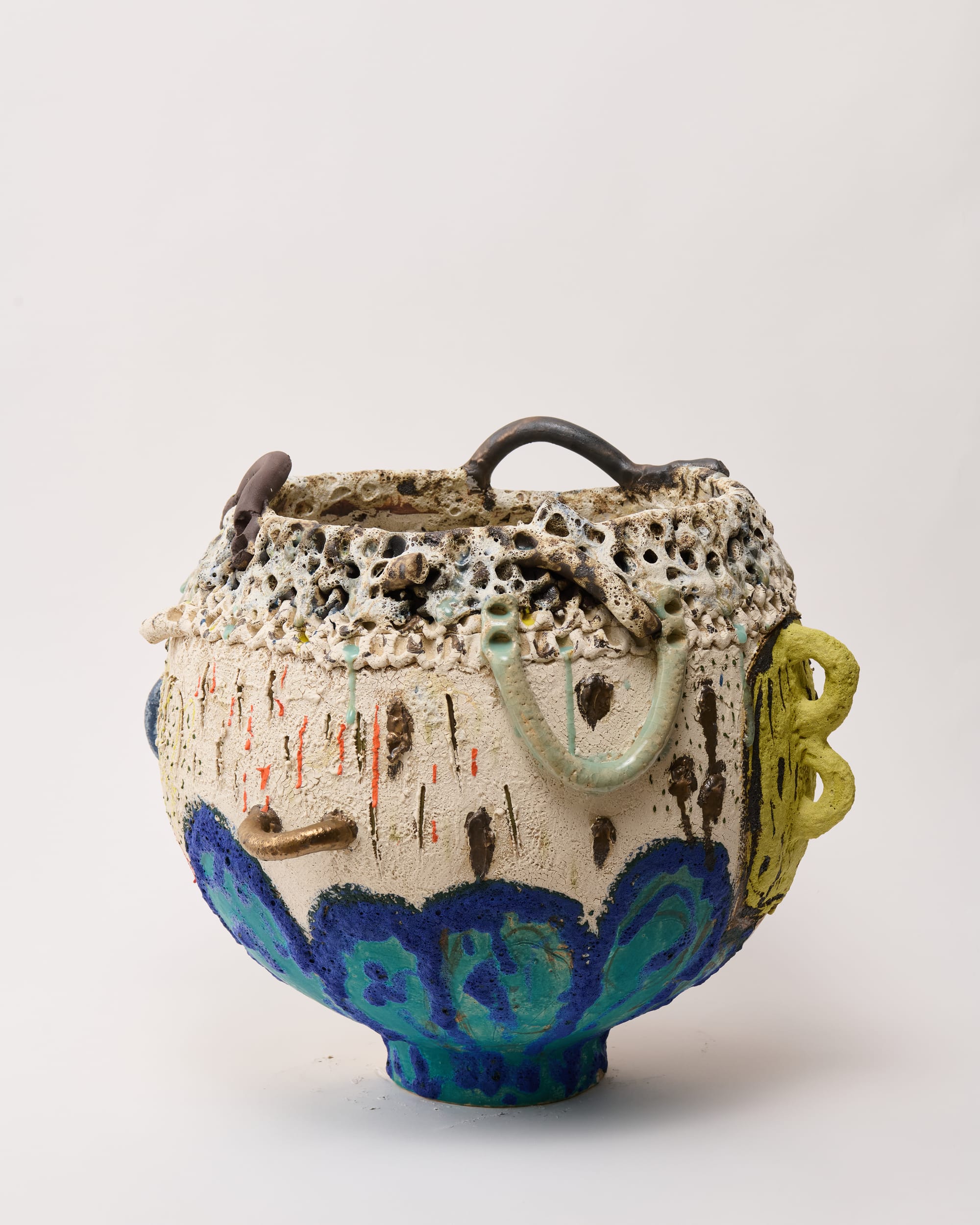

JANE YANG-D'HAENE, Untitled, 2025, stoneware, glaze, porcelain, 21.5 x 23 x 21.5 inches. Courtesy the artist and Bienvenu Steinberg & C, New York.
Jane Yang-D’Haene, Bienvenu Steinberg & C
At the booth of Bienvenu Steinberg & C, New York-based Jane Yang-D’Haene (b. 1970) unveiled her newest ceramic vessels, continuing a practice that hovers between sculpture and design. D’Haene draws on the aesthetics of Korean moon jars (dalhangari) while pushing their forms into unexpected directions. Richly textured and chromatically layered, her works evoke natural elements—earth, clouds, rain—yet also conjure associations with the body, with surfaces that appear scarred, sutured, or bandaged.
The artist often starts with porcelain vessels thrown on the wheel, then deliberately cuts, slices, and reconstructs them, wrapping damaged sections in thin porcelain-like gauze or reinforcing them with rougher stoneware. This process, shaped by her own recent health struggles, translates clay into a metaphor for resilience, vulnerability, and healing. At the Armory, her multicolored vessels seemed to breathe with atmospheric change, subtly asserting that beauty resides not in flawless perfection but in transformation and endurance.
D’Haene’s work has been exhibited internationally, including at Hauser & Wirth in Southampton and to Galerie Italienne in Paris. In 2023, then vice president Kamala Harris selected D’Haene’s work for the art collection of the vice president’s residence.
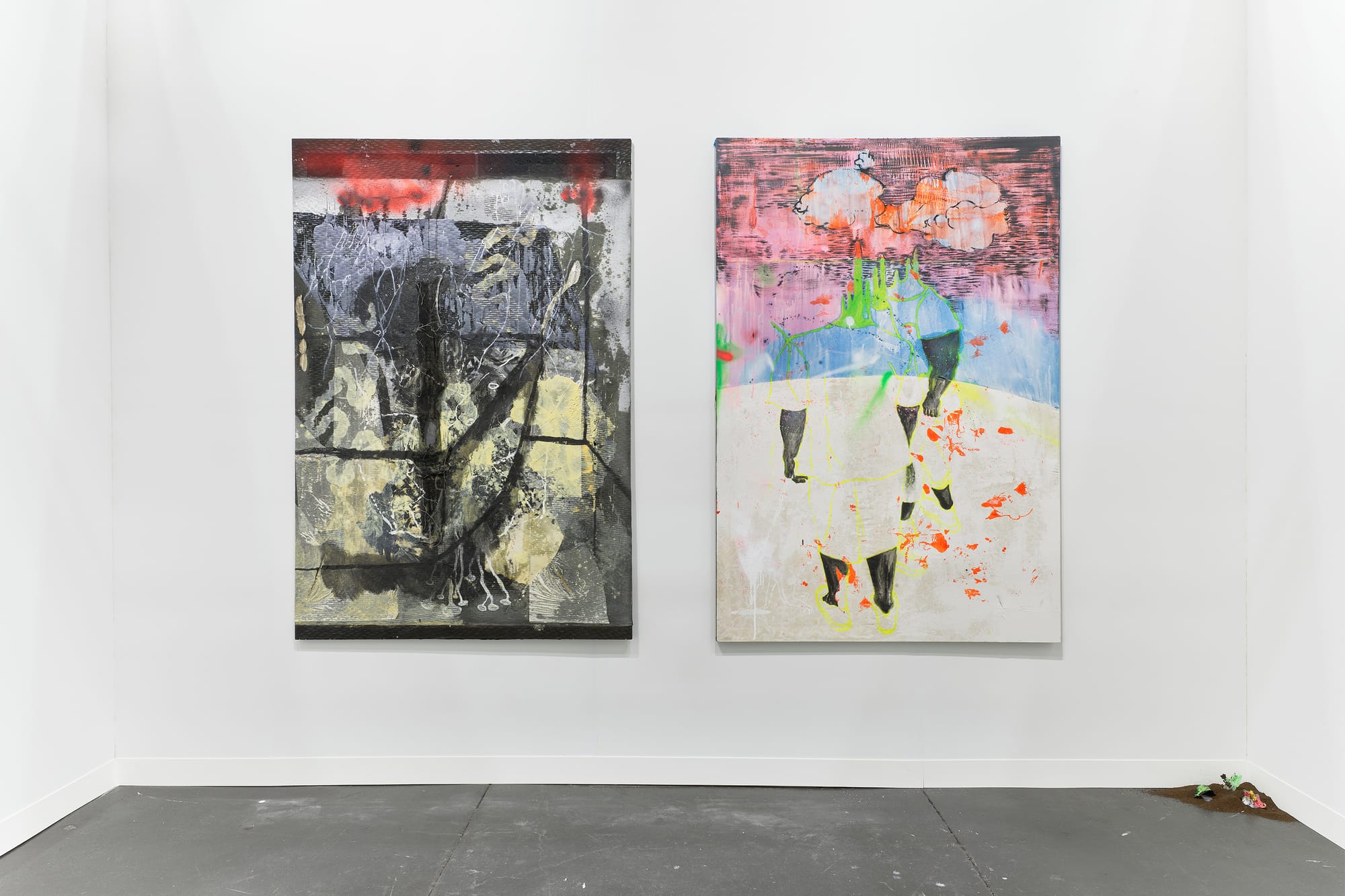
Kosuke Kawahara, RAINRAIN Gallery
At RainRain’s booth, New York-based Japanese artist Kosuke Kawahara (b. 1980) presented a series of light-sensitive paintings. Built from scrap fabrics and layered with oil, spray paint, urethane, and animal glue, the works are punctuated with neon pigments that reveal themselves only under ultraviolet light. To expose this hidden dimension, the gallerist supplies a blacklight: in its glow, spectral seams, glowing portals, and shadowy forms emerge from otherwise muted surfaces. Kawahara describes this process as “reconstructing the alternative space around darkness,” positioning decomposition and toxicity not as collapse but as catalysts for renewal.
In I’m not losing my fucking !%&X>¿* (2025), a surface that initially appears to portray smoke, stains, and erasures flickers into bursts of color and shape under blacklight—an image that refuses to stay still. This oscillation between darkness and luminosity evokes the sensation of crossing into another realm—an underworld marked by shadows, trauma, and resilience. Whether interpreted as meditations on Japan’s nuclear legacy or not, Kawahara’s paintings insist on the instability of perception itself: what lies hidden, and what it takes to bring it to light.
Xintian Tina Wang is president of the New York chapter of the Asian American Journalist Association in Washington, DC. Her work appears regularly in news and culture publications such as Time, Elle, The Brooklyn Rail, ARTNews, and The Observer.
